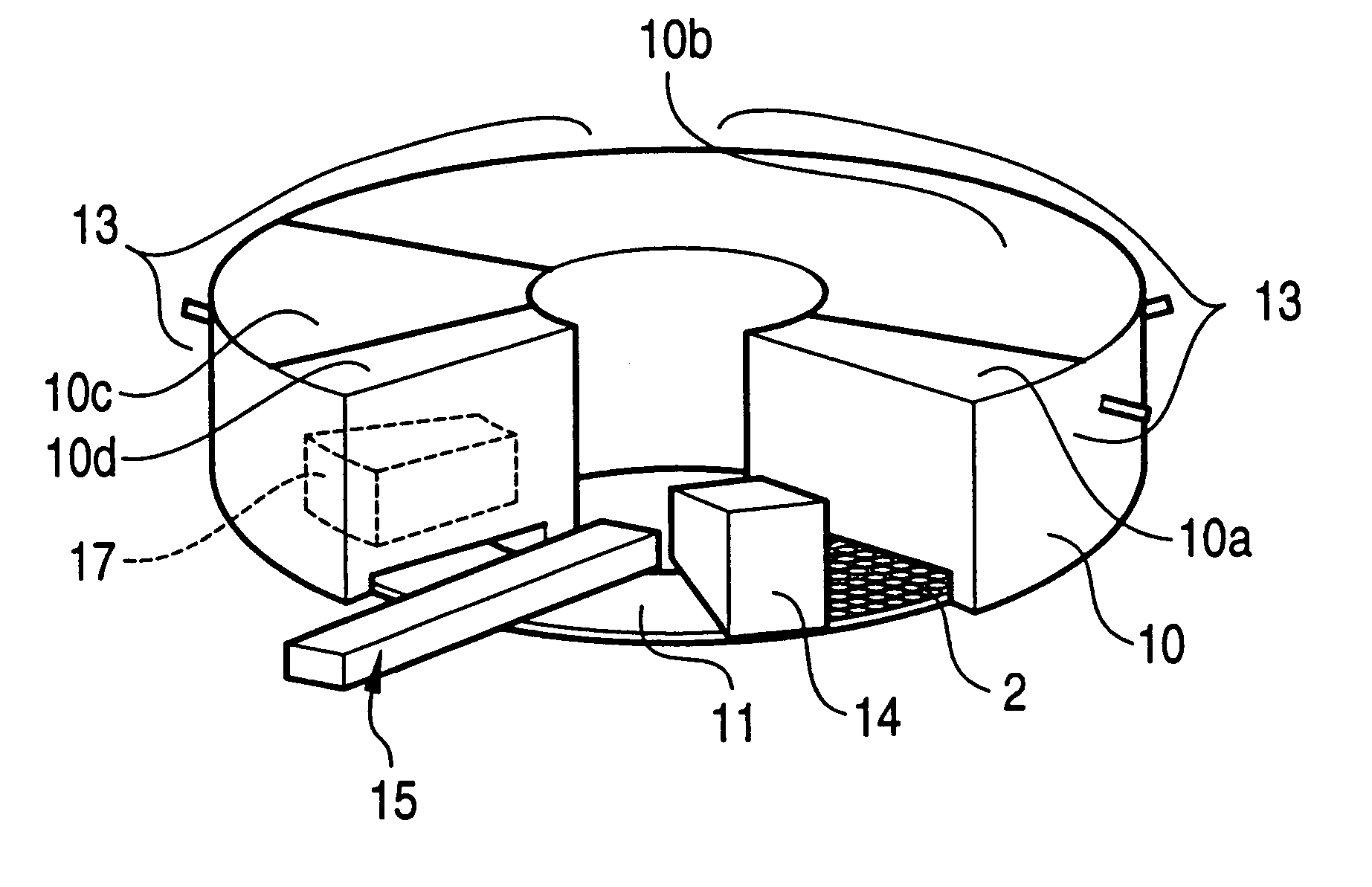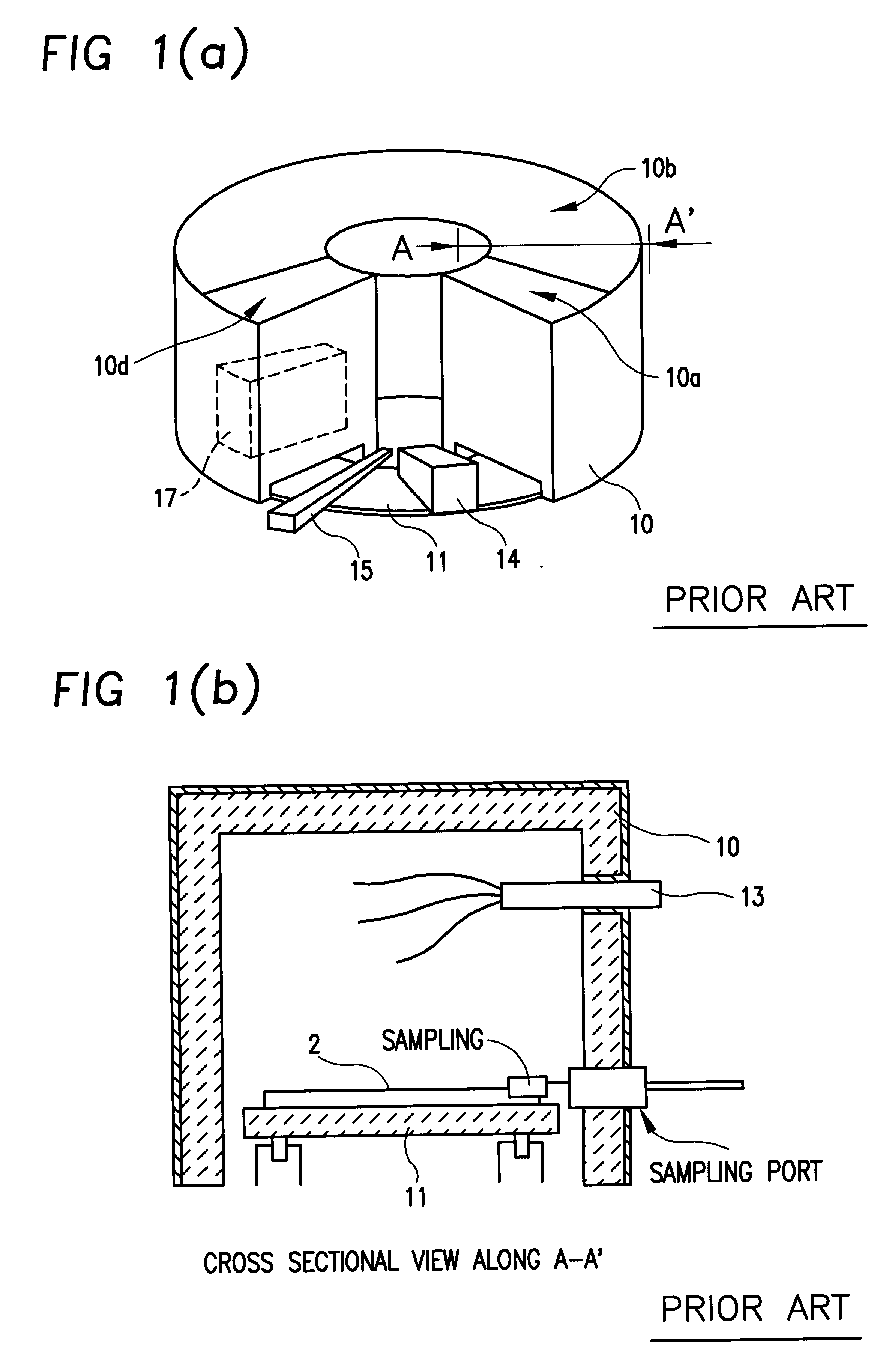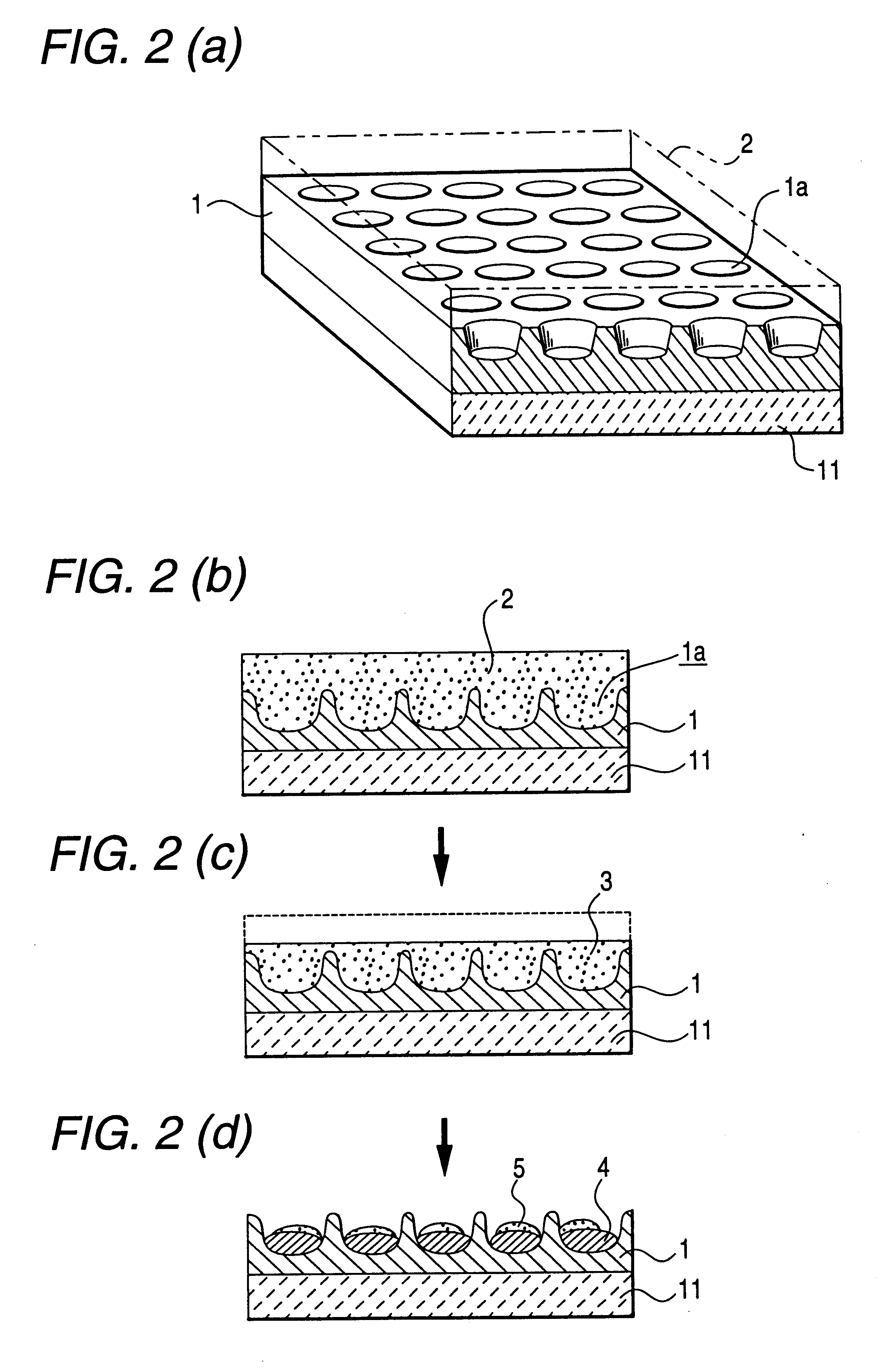Apparatus for producing a reduced metal, and traveling hearth furnace for producing the same
a technology of reduced iron and furnace, which is applied in the direction of lighting and heating apparatus, furnaces, charge manipulation, etc., can solve the problems of reducing iron more than scrap, affecting the quality of reduced iron products, and causing serious problems, and achieves low gangue and ash contents, small pores, and high quality.
- Summary
- Abstract
- Description
- Claims
- Application Information
AI Technical Summary
Benefits of technology
Problems solved by technology
Method used
Image
Examples
example 1
In this example, the operation described below was conducted using a rotary hearth furnace as shown in FIG. 7. The rotary hearth of 2.2 meter diameter was provided with an alumina refractory on the upper surface (as in FIG. 1(b)) and they were housed in an annular furnace body as in FIG. 1(b), in which a burner is disposed above the hearth.
As shown in FIG. 7, the hearth of the rotary furnace was divided into a preheating zone 10a, a reducing zone 10b, a melting zone 10c and a cooling zone 10d. A raw material layer 2 was formed on the rotary furnace hearth by charging and stacking a raw material mainly comprising an iron-containing material and a solid reducing material. In this facility, reference numerals identical with those shown in FIGS. 1(a) and 1(b) denote similar parts. The number 17 in FIG. 7 denotes a cooler disposed in front of a discharge port for cooling reduced iron and slag.
FIG. 8 is a schematic view taken near the furnace exit port used for the operation. After discha...
application example no.11
Application Example No. 11 involved lamination as in FIGS. 12(a) and 12(b), in which raw material 2 was placed in a layered shape on the hearth refractory 11 without any intervening solid reducing material layer. The reduced iron and the ash were melted for removing gangue and ash ingredients. Since the raw material was carried directly on the hearth refractory surface, the hearth refractory suffered from melting loss by molten materials. Further, some of the slag and the metal had large plate-like shapes that extended from the discharge port in the vicinity of the cooler 17 in FIG. 8. A crusher was disposed at a side of the discharge device and the products were crushed on the hearth before discharging to the outside of the furnace. Although the installation cost was increased by the installation of the crusher, and the running cost of electric power necessary for the operation of the crusher, and the cost regarding some melting loss of the hearth refractory material increased, the...
example 2
The following operation was conducted using the apparatus of Example 1. The raw material was charged and stacked at the supply port of the furnace by the charging device 14 on the rotary hearth 11 under the lamination condition shown in FIGS. 9(a) and 9(b) (Lamination Condition A). Limestone was added in an amount of 5% by weight into the solid reducing material layer 1. As shown in Table 5, it was found that the percentage of sulfur (S) was lowered in the recovered metal, in cases where limestone was blended with the solid reducing material layer, under substantially the same operation conditions.
PUM
| Property | Measurement | Unit |
|---|---|---|
| Mass | aaaaa | aaaaa |
| Mass | aaaaa | aaaaa |
| Mass | aaaaa | aaaaa |
Abstract
Description
Claims
Application Information
 Login to View More
Login to View More - R&D
- Intellectual Property
- Life Sciences
- Materials
- Tech Scout
- Unparalleled Data Quality
- Higher Quality Content
- 60% Fewer Hallucinations
Browse by: Latest US Patents, China's latest patents, Technical Efficacy Thesaurus, Application Domain, Technology Topic, Popular Technical Reports.
© 2025 PatSnap. All rights reserved.Legal|Privacy policy|Modern Slavery Act Transparency Statement|Sitemap|About US| Contact US: help@patsnap.com



